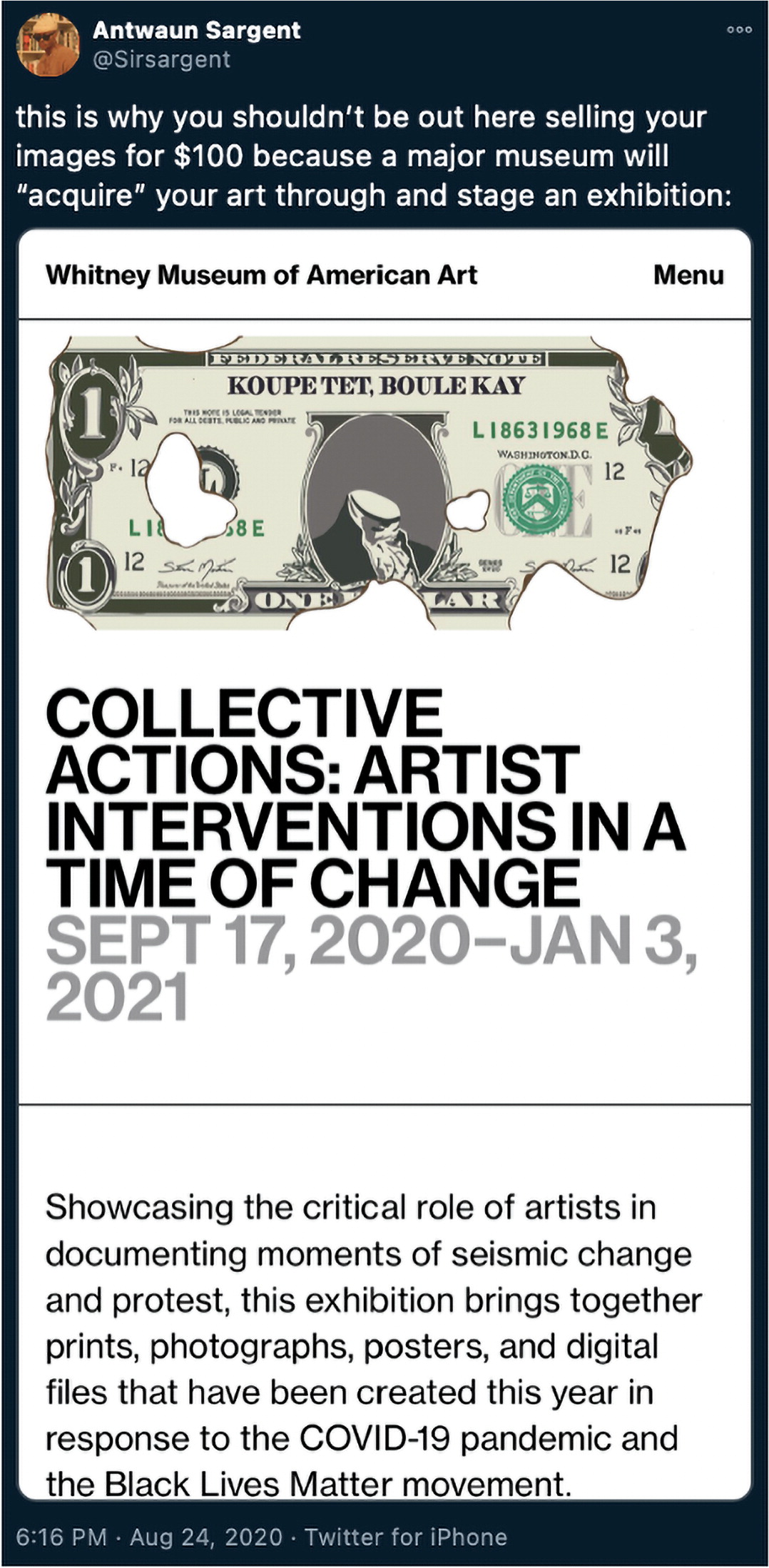Swimming against the Tide: Thoughts on Managing an Art Profession
Charles Gaines

(artwork © Charles Gaines; photograph provided by the artist)
The artist has the least agency in the power grid made up of artists, writers, curators, museum boards, gallerists, and collectors. The exceptions are artists who have exceptional careers. But agency is not intrinsic to any one of these groups, it is acquired collaboratively. The power grid of the market is unstable because it is based on works of art, which are complicated objects. Also, the interests and missions of its members are quite diverse, yet paradoxically unified by the idea that its purpose is to secure the best examples of works of art. Part of the art world is a market, essentially capitalist, which creates a space of winners and losers. However, the artist is in a unique place because what they make are not just simple commodities. More broadly, the art world is both an instrumental space of labor (which serves galleries) and an experimental space where knowledge can be produced (which serves museums and history). In view of this, in engaging the art world the young artist can protect herself by privileging ideas over markets. This is not to say that the artist does not operate in a market, it is to say that it is a market that should be governed by those ethics that privilege the production of ideas. For example, the artist can make pragmatic market decisions such as ensuring that their production is protected by contracts. At the same time, she should never decide to be in a show solely because it might be a good career decision, if doing so would require compromise. In each case the artist is privileging the aesthetic and conceptual domains of the work of art over market value.
Artists of color and women still face additional constraints on their ability to succeed. For example, there is heightened interest in diversity by the mainstream art world, which has increased the career opportunities of artists of color. However, just as in the world at large, where there is a growing middle and upper class of people of color, this growth does not extend broadly to the general population of people of color. A typical white family has ten times the net worth of a Black family. In the art world white people are still overrepresented, as the opportunities to succeed do not go very deep in the population of artists of color. White supremacy continues in the upper echelon of institutions to actively resist power sharing. This is why institutions such as museums continue to mishandle racial conflicts. People of color have not for the most part been elevated to decision-making positions, which leaves them out of any process designed to resolve the conflict. I am not suggesting that if our institutions were truly diversified that racial conflict would not exist. I am saying that the solutions would be different; diversifying the boards all the way to the top decision-makers would neutralize white supremacy and make institutions more competent in resolving not only racial conflict but in finding ways to be more fully representative of the culture at large.
Charles Gaines lives and works in Los Angeles, where he is a member of the CalArts School of Art faculty. He has been the subject of numerous exhibitions in the United States and internationally, and his work is in prominent public collections including the Museum of Modern Art, New York; the Whitney Museum of American Art, New York; and the Los Angeles County Museum of Art. Gaines’s work was presented at the Venice Biennale in 2007 and 2015.

